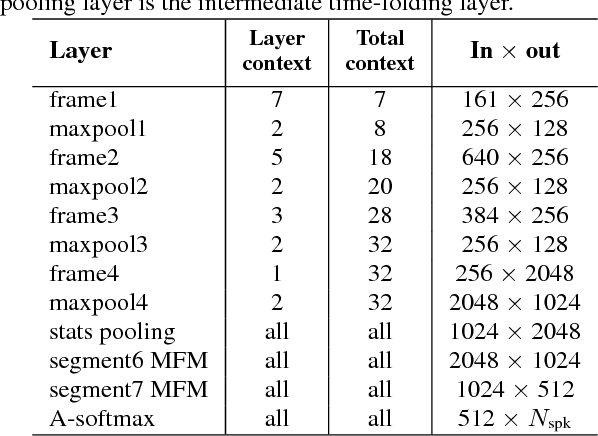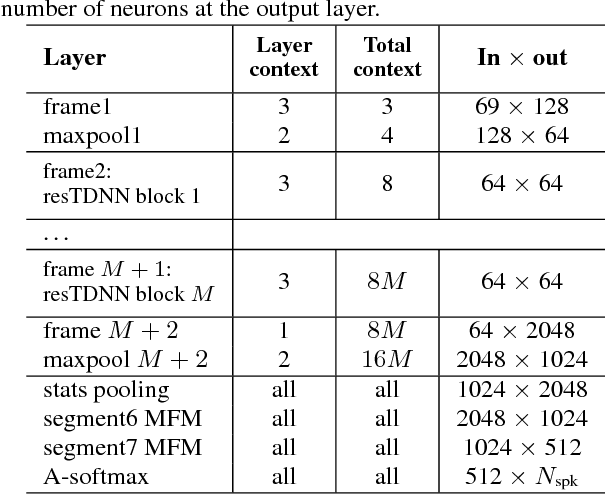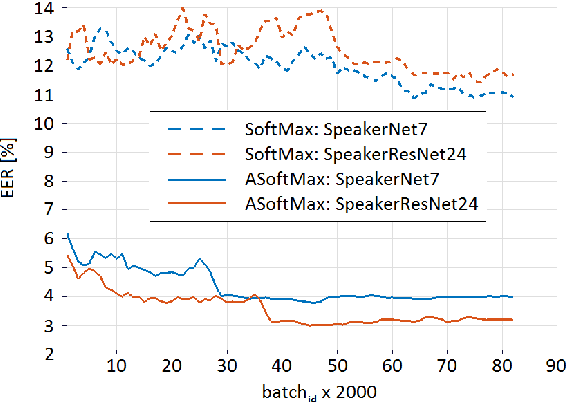On deep speaker embeddings for text-independent speaker recognition
Paper and Code
Apr 26, 2018



We investigate deep neural network performance in the textindependent speaker recognition task. We demonstrate that using angular softmax activation at the last classification layer of a classification neural network instead of a simple softmax activation allows to train a more generalized discriminative speaker embedding extractor. Cosine similarity is an effective metric for speaker verification in this embedding space. We also address the problem of choosing an architecture for the extractor. We found that deep networks with residual frame level connections outperform wide but relatively shallow architectures. This paper also proposes several improvements for previous DNN-based extractor systems to increase the speaker recognition accuracy. We show that the discriminatively trained similarity metric learning approach outperforms the standard LDA-PLDA method as an embedding backend. The results obtained on Speakers in the Wild and NIST SRE 2016 evaluation sets demonstrate robustness of the proposed systems when dealing with close to real-life conditions.
 Add to Chrome
Add to Chrome Add to Firefox
Add to Firefox Add to Edge
Add to Edge